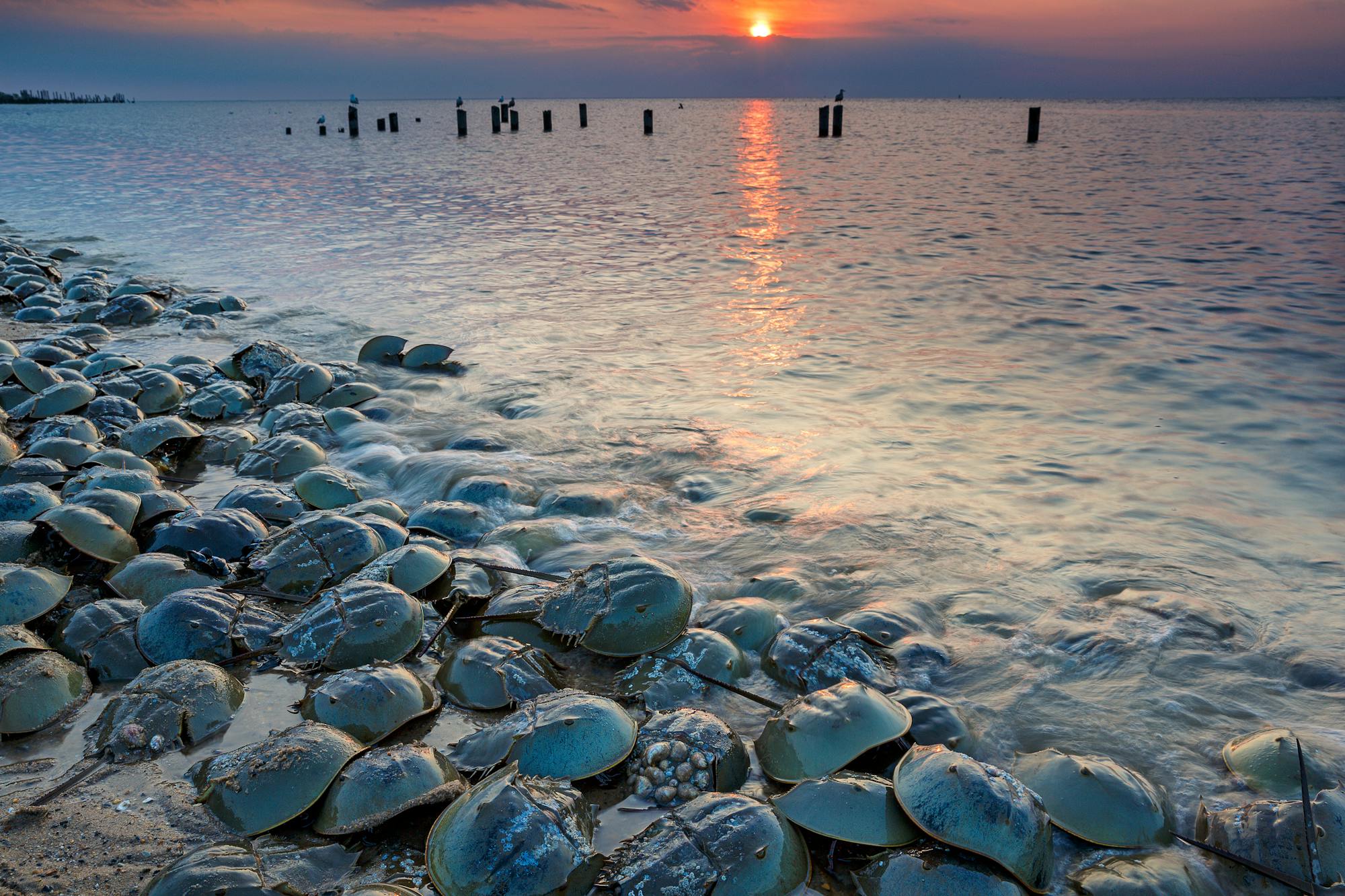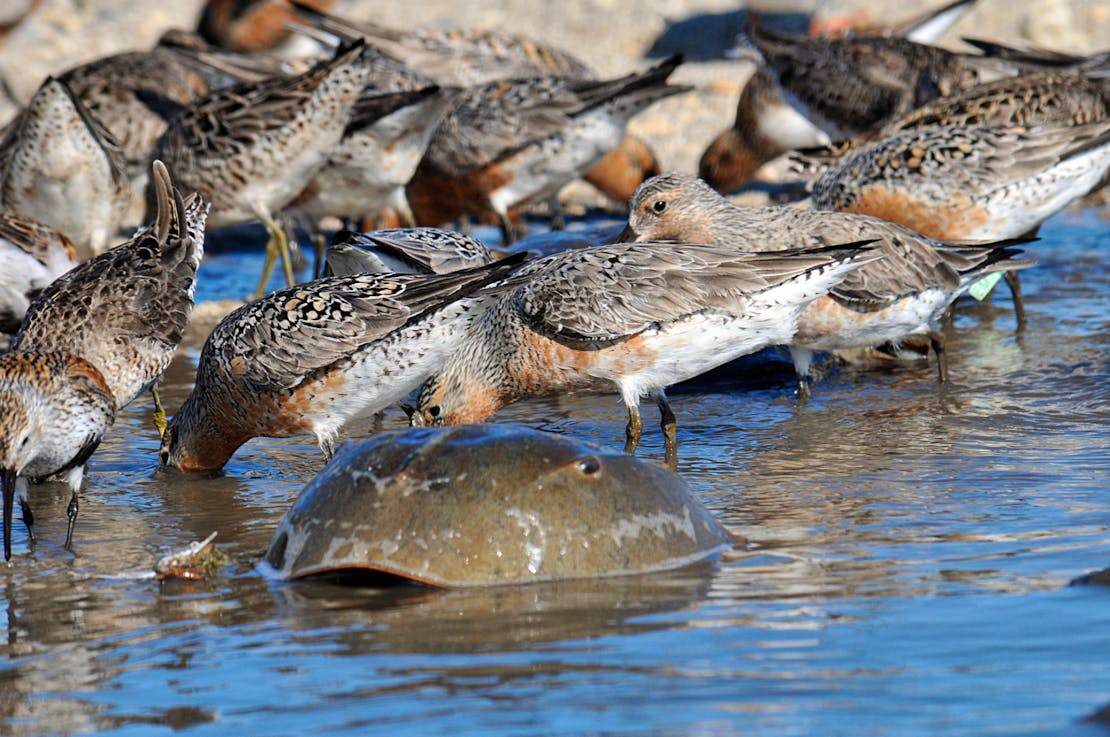Under the full and new moons of early summer, a ritual nearly as old as life itself, unfolds on beaches from Florida to Maine: the spawning of the horseshoe crab. Driven by an ancient instinct, crabs emerge from the depths, where they are awaited by red knots, ruddy turnstones and migratory shorebirds looking for a meal of their eggs. The result is a cherished wildlife spectacle, enjoyed by people coastwide.
Just as these species converge on spawning beaches, however, so too do corporate fishermen, threatening their continued existence.
In South Carolina, contractors for Charles River Laboratories harvest and live bleed roughly 150,000 crabs for use in the biomedical industry. For decades, these harvesters worked Cape Romain’s remote islands, salt marshes and tidal creeks, depriving shorebirds of what likely amounted to hundreds of thousands of crabs that would have otherwise provided billions of eggs.
That wrong has finally been righted, thanks to litigation brought by Defenders and the Southern Environmental Law Center.
Harvesting was recently declared an “inappropriate” use on a handful of islands that disturbs roosting and nesting birds, deprives red knots of calories and ultimately undermines the mission of the National Wildlife Refuge System.
We first learned of illicit harvesting roughly five years ago. Under the cover of night, even the most sensitive of islands in Cape Romain National Wildlife Refuge, otherwise closed to all entry, were poached, with the knowing support of company leaders. This practice not only disturbs and robs shorebirds of food, but can kill a third of female crabs, with the potential for long-term impacts. To add insult to injury, piles of dead crabs, discarded after biomedical bleeding, were documented in the refuge. Harvesters were also seen tossing crabs skyward, by the telson (tail), upon return to the water.
Roughly 25,000 crabs were taken from the refuge per year.
Cape Romain has finally been spared of this indignity, its world-class wildlife shielded for the first time since the 1990s. Following immense public pressure, the state also rejected the opening of the ACE Basin National Estuarine Research Reserve to harvesting. Taken together, it is a sliver of hope for two beleaguered species, but work remains.
According to a recent Defenders report, poaching is common if not rampant in South Carolina; declines have befallen virtually every major spawning ground; and SC Department of Natural Resources leaders have ignored the pleas of their own and catered instead to Charles River, the agency’s most prominent financial benefactor, undermining the state’s conservation legacy.
Unfortunately, these impacts are neither unique nor isolated to South Carolina.
Just this year, roughly 12,000 red knots were documented in Delaware Bay, down from 30,000 three years ago, and nearly a hundred thousand three decades ago. By any metric, the red knot is now on its last leg and lacking critical resiliency.
Rather than tackling this crisis, the Atlantic States Marine Fisheries Commission (ASMFC) has shown a brazen if not reckless disregard for the facts. Even as red knots are starving to death, regulators plan to remove protections from the female crabs of Delaware Bay, for use as bait.
By rolling back years of protections, this sweetheart deal benefits only a handful of fishermen, while likely running afoul of the Endangered Species Act, under which the red knot is protected. By flatly ignoring mortality thresholds meant to trigger intervention, the biomedical industry has also been given free rein.
The result is a predictable erosion of public trust and a slide towards extinction for imperiled wildlife.
In recent months, state legislatures have fought to either restore transparency or usurp management control altogether. State Senator George E. "Chip" Campsen III introduced a bill forcing disclosure of harvest information in South Carolina. In Connecticut, a bill prohibiting the harvest passed unanimously in the house but failed the senate for technical reasons. State senators from New Jersey also adopted a resolution calling upon the ASMFC to protect the female horseshoe crabs of Delaware Bay.
Living beaches, once alive with birds and crabs, are either no longer, or a shadow of what once was, inspiring action from communities up and down the coast. While legislation is long overdue, we also need to raise the shield for the very places set aside for wildlife, such as refuges, national seashores and designated wilderness areas.
At their best, these safe havens provide rare sanctuary. At their worst, they are either directly poached or nibbled at along the edges, leaving few if any lands for crabs and birds. With surging demand, constant vigilance in their defense is needed now more than ever. As Charles River moves into new states, such as Massachusetts, that work must begin today.
In the meantime, the horseshoe crab, though greatly diminished, can again find sanctuary in Cape Romain, along some of South Carolina’s last intact coastline. In time, the species will again feed not only shorebirds, but loggerhead sea turtles, sharks and various fish, repairing a broken ecosystem.
We look forward to that day.










